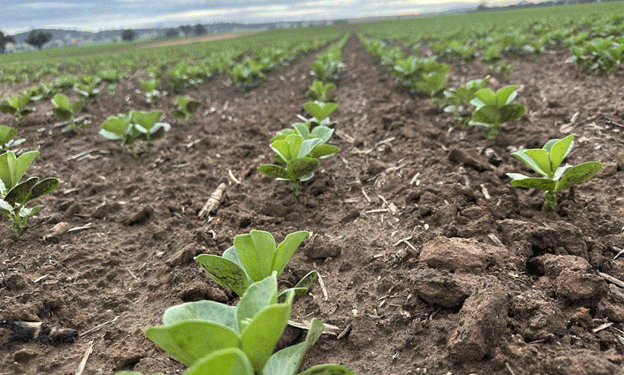The yield prospects for lentil and faba bean crops in Australia have seen significant improvement following recent rains in South Australia (SA) and Victoria. This positive development comes at a critical time as crops had germinated later than usual, during the depths of winter. The rains have brought renewed optimism, but substantial additional rainfall is needed to ensure at least average yields.
Chickpeas
Desi chickpea crops in northern New South Wales (NSW) and Central Queensland (Qld) are currently forecast to yield above average, contingent on managing potential fungal disease pressures as temperatures rise. Market forecasts predict Australia’s upcoming chickpea harvest to be around 1.5 million tonnes (Mt), which aligns with the Australian Bureau of Agricultural and Resource Economics and Sciences (ABARES) estimate, but falls short of the 1.9-2Mt figures speculated in the global market.
The price for new-crop chickpeas has decreased to $950 per tonne, down by $50 from the previous month. This decline is attributed to the Indian Government’s policy limiting the storage duration of imported stocks, which has resulted in subdued trade activity and cautious grower selling due to concerns over waterlogging and disease.
Faba Beans
The faba bean market remains robust, with prompt market prices around $650 per tonne due to dwindling stocks from the 2023-24 crop. Shipping activities indicate the final bulk export of the season recently departed Port Adelaide for Egypt. However, trading for the new-crop market is slow, reflecting ongoing production concerns due to insufficient rainfall in typically high-rainfall regions like south-west Victoria and SA’s South East.
SA’s faba bean forecast stands at 209,305 tonnes from 105,500 hectares, slightly down from the previous year. Despite the rain, Victoria’s Wimmera and south-west regions still require more rainfall to secure their crops’ potential.
Lentils
Lentil prices have seen a significant drop, about $100 per tonne, now trading around $900 per tonne for Nipper types at Port Adelaide, influenced by an incoming large Canadian crop. Larger Jumbo-type lentils are trading between $960 and $980 per tonne. Contributing factors to the price drop include increasing container freight rates to India, a lack of demand, and improved growing conditions in Canada, although recent excessive rain has sparked concerns about disease and yield impacts.
In SA, lentil production is expected to rise to 510,878 tonnes from 332,400 hectares, up from last year’s 362,260 tonnes from 240,200 hectares. Despite some concerns over moisture deficits in higher-rainfall areas, regions like Yorke Peninsula and Eyre Peninsula are performing better than expected.
The recent rains in South Australia and Victoria have provided a much-needed boost to the yield prospects of lentil and faba bean crops. However, the need for further substantial rainfall is crucial to achieving optimal yields. The chickpea market remains cautiously optimistic, with above-average yields expected if disease pressures are managed. Market prices for pulses are reacting to global influences and local conditions, highlighting the dynamic nature of the agricultural sector. Continued monitoring and adaptive management will be essential for farmers to maximize their crop potential and navigate market fluctuations.
Error




